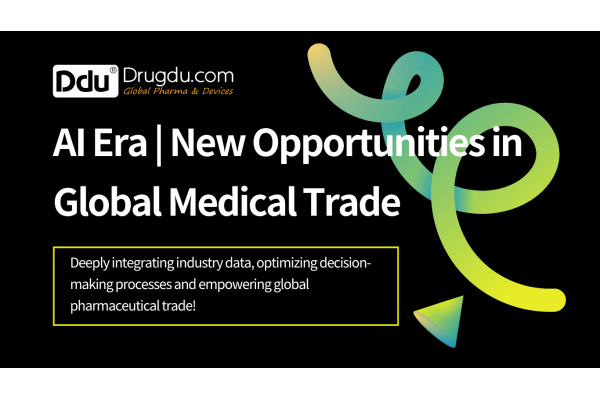【EXPERT Q&A】What are the advantages and disadvantages of the implementation of drug test data protection management measures?
April 4, 2025
Source: drugdu
 252
252
Drugdu.com expert's response:
The implementation of the Measures for the Protection and Management of Drug Trial Data has significant dual advantages and disadvantages, requiring comprehensive assessment from multiple dimensions including institutional innovation, market competition, and patient needs. The following analysis is based on specific cases and policy logic:
I. Core Benefits: Driving Innovation and Regulating the Market
Innovation Incentives and Long-term Investment Guarantee
Market Exclusivity Period Forms a Return Loop: Innovative drug companies need to invest decades of time and hundreds of millions of dollars in clinical trials. Data protection ensures they can recover costs and obtain reasonable profits through a market exclusivity period of 6-12 years (e.g., Keppra was approved for marketing in over 90 countries through protection), enabling continuous investment in the next generation of drug development.
First Generic Drug Incentives Fill Gaps: Providing a 3-year data protection period for the first generic drug (e.g., the first generic drug approved domestically for a foreign-listed original drug) can accelerate the domestic supply of clinically needed drugs and shorten the gap between "drugs available abroad but not domestically."
Alignment with International Rules and Industrial Upgrading
Attracting Global Synchronous Applications: By clarifying data protection rules for foreign-listed original drugs (protection period = 6 years - overseas listing delay time), it encourages multinational pharmaceutical companies to prioritize applications for listing in China. For example, if a drug enters China three years after being listed overseas, its protection period is three years, which is earlier than the six-year protection period for domestic synchronous listings, promoting global new drugs to benefit Chinese patients faster.
Breakthroughs in Rare Diseases and Pediatric Drugs: Providing longer protection periods for drugs in weak areas such as rare diseases and pediatric drugs to cover their high R&D costs. For example, the annual treatment cost of a rare disease drug exceeds 3 million yuan, and without data protection, companies would have almost no incentive to develop it.
II. Potential Drawbacks: Monopoly Risks and Accessibility Challenges
Price Monopolies and Medical Insurance Pressures
Extension of High-price Window Period for Original Drugs: During the protection period, there is a lack of competition from generic drugs, allowing original drug companies to maintain high prices. For example, the annual cost of an anticancer drug during the protection period reaches hundreds of thousands of yuan. If the launch of generic drugs is delayed, patients will need to bear high costs for a long time.
Sustainability Risks of Medical Insurance Payments: If rare disease drugs receive longer protection periods, medical insurance will need to pay high prices for a long time, potentially crowding out resources for other diseases. For example, among the 207 rare diseases listed in China, only 60 have available drugs, and some drugs are not included in medical insurance due to their prices.
Misallocation of R&D Resources and Innovation Inertia
"Pseudo-innovation" Arbitrage Risks: Pharmaceutical companies may extend protection periods through non-substantial innovations such as improved formulations and minor dosage adjustments, rather than investing in breakthrough R&D. The Indian Pharmaceutical Industry Association warns that such strategies may weaken genuine innovation incentives.
Delays in Generic Drug Launches: If data protection implementation is rigid (e.g., failing to clarify application time nodes for generic drugs), it may delay the approval of generic drugs and exacerbate market monopolies.
III. Balancing Path: Refined Policy Design
Differentiated Protection Strategies
Dynamic Adjustment of Protection Periods: Dynamically setting protection periods based on the clinical value and R&D costs of drugs. For example, the protection period for rare disease drugs can be extended to 10 years, while that for ordinary generic drugs can be shortened to 3 years.
Introduction of a "Waiting Period" Model: Drawing on the experiences of the EU and the US, allowing generic drug companies to submit applications before the data protection period expires to shorten approval lags.
Supporting Measures to Enhance Accessibility
Medical Insurance Negotiations and Payment Innovations: Reducing prices of high-priced original drugs through medical insurance negotiations, or adopting a "company autonomous pricing + medical insurance proportional payment" model for rare disease drugs.
Disclosure of Clinical Trial Data: Disclosing non-core data (e.g., partial efficacy indicators) after the protection period expires to promote generic drug development and reduce the costs of repeated trials.
IV. Conclusion
The Measures for the Protection and Management of Drug Trial Data are an inevitable choice for the upgrading of China's pharmaceutical innovation. Through the "market exclusivity - return incentive" mechanism, they have solved the long-standing problem of "free-riding by generic drugs." However, it is necessary to be alert to the monopoly risks caused by excessive protection. Only through a combination of differentiated protection, medical insurance coordination, data disclosure, and other measures can we find the optimal solution between innovation incentives and patient accessibility. In the future, policies need to continuously track international experiences (e.g., refined implementation of the TRIPS Agreement) and dynamically adjust according to the maturity of the domestic industry to truly achieve a virtuous cycle of "innovation - accessibility - industrial competitiveness."

Read more on
- 【EXPERT Q&A】How does the FDA of the United States classify medical devices? December 12, 2025
- 【EXPERT Q&A】What certifications are required for the export of pharmaceutical products? December 10, 2025
- 【EXPERT Q&A】What are the differences between medical device verification and medical device validation? December 8, 2025
- 【EXPERT Q&A】What certifications are required for the export of medical products to Malaysia? December 5, 2025
- 【EXPERT Q&A】When should the continuation registration process for medical devices be initiated? December 3, 2025
your submission has already been received.
OK
Subscribe
Please enter a valid Email address!
Submit
The most relevant industry news & insight will be sent to you every two weeks.



